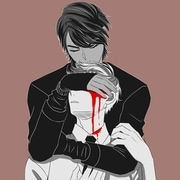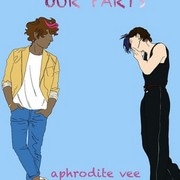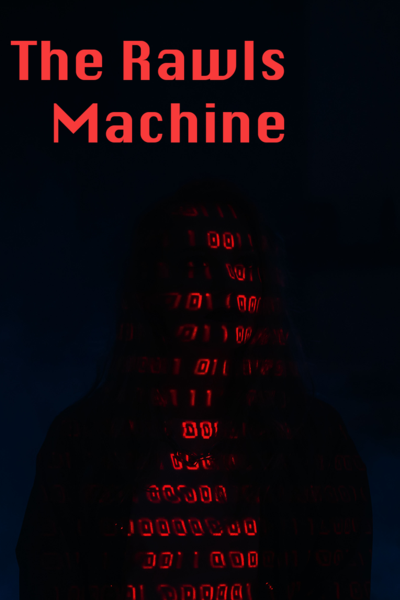Part I
“Every user is a short survey, account creation, and verification away from contributing to the Rawls Project,” I concluded. “Miss Ruiz, you can’t turn that into data,” Sloane Richardson replied as he shot down my pitch, “and what’s worse is that you have no plan to apply the data. In other words, it’s useless. What would you even do with it if you could collect the data on ‘How to fix the world?’ It seems like a waste of time and resources to me.” The final nail in my coffin fell with the investor relations file I had brought to the pitch. I failed to convince even the most speculative investor. I doomed the project because they cannot avoid hearing condescension when a smart woman speaks to them on a topic they know nothing about. My tone comes off, in their words not mine, like I know what I’m talking about but there’s no substance. As if they could recognize substance.
It began as a thought experiment fifty years ago in a book titled A Theory of Justice by a Harvard Political Science professor named John Rawls. How can we most fairly structure society? How might we define and reduce unjust inequalities among us? Aashvi Li read it during a political philosophy class with an impassioned professor hell bent on convincing her students of the man’s brilliance. Aashvi came to me with the idea in our second year of college, “Let’s adapt it into a platform. We have the technological means to pose the experiment to everyone in the world, simultaneously.” I thought she was joking, or at least delusional, having some time ago smoked a large blunt to herself. Eyes red and glazed, I could still tell she was somewhat serious despite the intermittent, slack-jawed smirk. “No, really. Let’s change the fucking world.”
Our joint venture launched that weekend, after we ordered a pizza, in fact. Aashvi and her brilliant arsenal of developer tools would work on the site, application, database hosting, and pretty much everything else requiring technical knowledge. I was to handle the ‘human interaction side’ and I was doing a shitty job of it. Sloane was the latest in a string of investor relations failures. Nobody it seemed but Aashvi and I saw the value in data designed to fix the world. Aashvi’s mother fled Sri Lanka after the police murdered her father. She told me at a bonfire celebrating a friend’s graduation a year after we vowed to change the world.
I got the notification she was calling right after I left the building, her timing immaculate as always, “Aashvi, Hi! --No, I’m sorry, I’m not actually cheerful, they rejected the bid outright. I’m so sor-- Yes, I remember the conference. Yes. Really? That’s under one fourth of our asking bid… A social engineer? Ok, I’ll see what I can learn.” With that another prospect had fallen into our laps. I mean, Aashvi’s lap.
While walking through the parking garage, I recalled a party our flat had thrown Aashi on a return from her successful internship at a deep learning firm. We had cooked a massive feast of roasted lemon potatoes drizzled in butter, steaming piles of spicy and nutty dahls, and fried plantains. We had all pitched in to buy a margarita machine and laughed into the night playing board games and catching up. Late that night, after we digested the food and margaritas, we danced in our living room on the coffee table and sofas. Aashvi walked from a six figure salary offer after graduation and we took that as a cause for celebration. Whatever rejection she had to make now would ultimately lead to something infinitely better-- the universe worked like that for Aashvi.
I removed my earrings and shook out my hair in the car, I had about an hour to drive away from the city into an adjacent suburb to meet with Ronie. They are an entrepreneur that I met at a conference on a business trip the company funded. I remember meeting them in a working group one ethical business practices in the modern era. Nonetheless, they were offering a bid of five hundred in return for a partner title. But I knew what was happening-- resume building on their part. Their consulting firm was disbanded a year after the start up and they were forced to enter the job market. I will ask how they pieced together the 500 thousand.
I need this drive. It’s too early for the sluggish traffic and I’m gently cruising toward the address Aashvi sent me with hopes to be home early to check on final details for the marketing campaign. I’m not built like Aashvi, I can’t work all the time. Sometimes, passively listening to interviews with people I know nothing about are exactly the come-down I need between the bullshit and rabble. And nothing is quite as soothing as a steady moving car on a warm day.
Everything is clean and orderly inside the apartment. Three plants sit on a shelf near the window and we sit at a large wooden table. Even with my hair down, the blazer in the car, and flats instead of heels I am still overdressed. Ronie wears light grey sweats and a black t-shirt and hasn’t made a noise while reading through our investor relations packet. Ronie has most of the lights on and I sense a headache coming. A monitor sits between us that displays the website we launched a year ago and they switch between browsing both. Finally, after a brief trip to the bathroom, Ronie began, “Well, I don’t know if you’re aware how close you are to something revolutionary but I see why the sharks weren’t interested.”












Comments (3)
See all